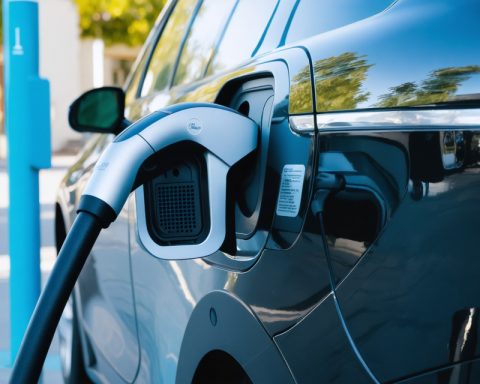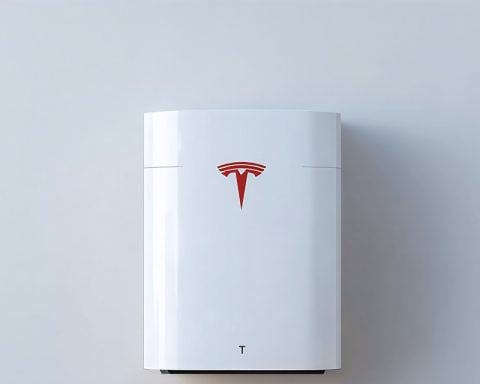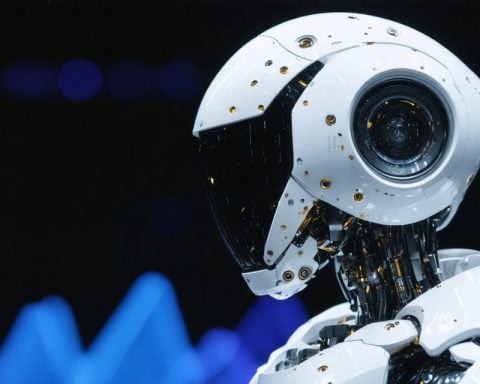- Hyundai is advancing EV technology with its “Dream” line of all-solid-state batteries, aiming for significant improvements in range, charging time, and safety.
- An investment of $9 billion over the next decade underscores Hyundai’s commitment to revolutionizing battery technology.
- The pilot line for all-solid-state batteries is set to launch in Uiwang in March, marking a pivotal step toward development.
- Despite industry-wide challenges in mass production, Hyundai’s progress suggests a potential for rapid advancements.
- Collaborations with industry leaders like SK On and LG Energy Solution enhance Hyundai’s strategic position in the EV landscape.
- Experts predict the wider adoption of these batteries and EVs by 2030, signaling a gradual yet impactful shift in mobility.
- Hyundai’s efforts highlight a broader trend in redefining mobility through cutting-edge technology, emphasizing a future where electrified transport is pivotal.
Beneath the shimmer of South Korea’s technological landscape, Hyundai embarks on a groundbreaking journey that could revolutionize electric vehicles (EVs) as we know them. In the city of Uiwang, the whispers of a transformative shift grow louder, with Hyundai unveiling its ambitious “Dream” line of all-solid-state batteries.
Imagine an EV charging in record time, swiftly zipping across the highway without a worry about running out of juice. Hyundai is on the brink of making this vision a reality, plunging $9 billion into the future of battery technology over the next decade. Come March, this journey inches closer to its destination with the anticipated opening ceremony spotlighting the all-solid-state pilot line.
The allure of these batteries lies in their potential to vastly extend the range of EVs, accelerate charging times, and bolster safety—all cornerstones for Hyundai as it races towards dominance in the EV market. Although industry giants worldwide grapple with the challenges of mass-producing stable all-solid-state configurations, Hyundai’s innovative strides suggest they might eclipse competitors faster than imagined.
Coupled with an array of partnerships with battery powerhouses like SK On and LG Energy Solution, Hyundai’s pursuit paints a picture of a future where cars aren’t just vehicles but leaps into modern technology. However, while the excitement ramps up, patience remains key. Industry visionaries forecast the true dawn of these vehicles by 2030.
In this fast-paced digital age, where advancements reshape our experiences daily, Hyundai’s crusade is a beacon, marking the future of electrified mobility. It’s not merely about cars—it’s about pushing boundaries, redefining mobility, and igniting possibilities. So, as we edge closer to this electrifying era, one thing remains clear: the future, indeed, is electric.
“Hyundai’s Dream: The Future of Electric Vehicles Begins Now”
Exploring All-Solid-State Batteries: A Comprehensive Guide
The unveiling of Hyundai’s ambitious “Dream” line in Uiwang introduces a wave of advancements and potential transformations for the electric vehicle (EV) landscape. Here’s a closer look into some crucial areas that were not fully covered in the original source article.
How All-Solid-State Batteries Work: A Step-by-Step Guide
1. Material Selection: Use solid electrolytes instead of liquid ones. This can improve stability and safety.
2. Layer Manufacturing: Create thin layers of solid electrolytes that allow for the efficient flow of ions.
3. Testing and Optimization: Ensure that the materials and configurations enable improved performance and safety metrics.
4. Scaling Production: Move from lab-scale experiments to mass production without compromising the battery’s integrity or efficiency.
Real-World Use Cases
– Extended Range: All-solid-state batteries could double the range of current lithium-ion batteries, essential for long-distance travel.
– Rapid Charging: EVs might fully charge in 15 minutes, addressing range anxiety and waiting times associated with current models.
Market Forecasts & Industry Trends
– By 2030, the global all-solid-state battery market is projected to grow exponentially due to increased demand for safe, high-performance EVs.
– Major automakers, along with tech giants, are investing heavily in this technology, aiming for early entry advantages (source: Statista).
Features, Specs & Pricing
– Safety: Due to the absence of flammable liquid electrolytes, all-solid-state batteries are inherently safer.
– Durability: Enhanced cycle life due to stable solid-state interfaces.
– Cost: While development is expensive, costs are expected to decrease as production scales and technology improves.
Security & Sustainability
– Low Environmental Impact: Reduced dependence on cobalt and nickel reduces mining’s ecological toll.
– Recyclability: Easier recycling processes due to simplified chemical structures.
Insights & Predictions
– Hyundai could lead this transition if their pilot line becomes successful, setting standards for future EV projects globally.
– Analysts predict that solid-state batteries could capture significant market share by 2030 if developmental milestones are achieved consistently.
Pros & Cons Overview
– Pros: Longer range, faster charging, improved safety, and potential cost gains in long-term application.
– Cons: High initial production costs and technical challenges in mass production.
Actionable Recommendations
– Stay Informed: Follow industry trends and Hyundai’s announcements, as changes and breakthroughs are imminent.
– Consider Future EV Investments: As advancements materialize, consider investing in automakers leading in solid-state technology for potential long-term gains.
– Emphasize Sustainability: Support initiatives and companies that prioritize green, sustainable practices in their EV development.
Hyundai’s journey into all-solid-state batteries not only symbolizes a leap in EV technology but also heralds a future of endless possibilities and sustainable progress. For more exciting developments in technology and automotive trends, check out Hyundai.













